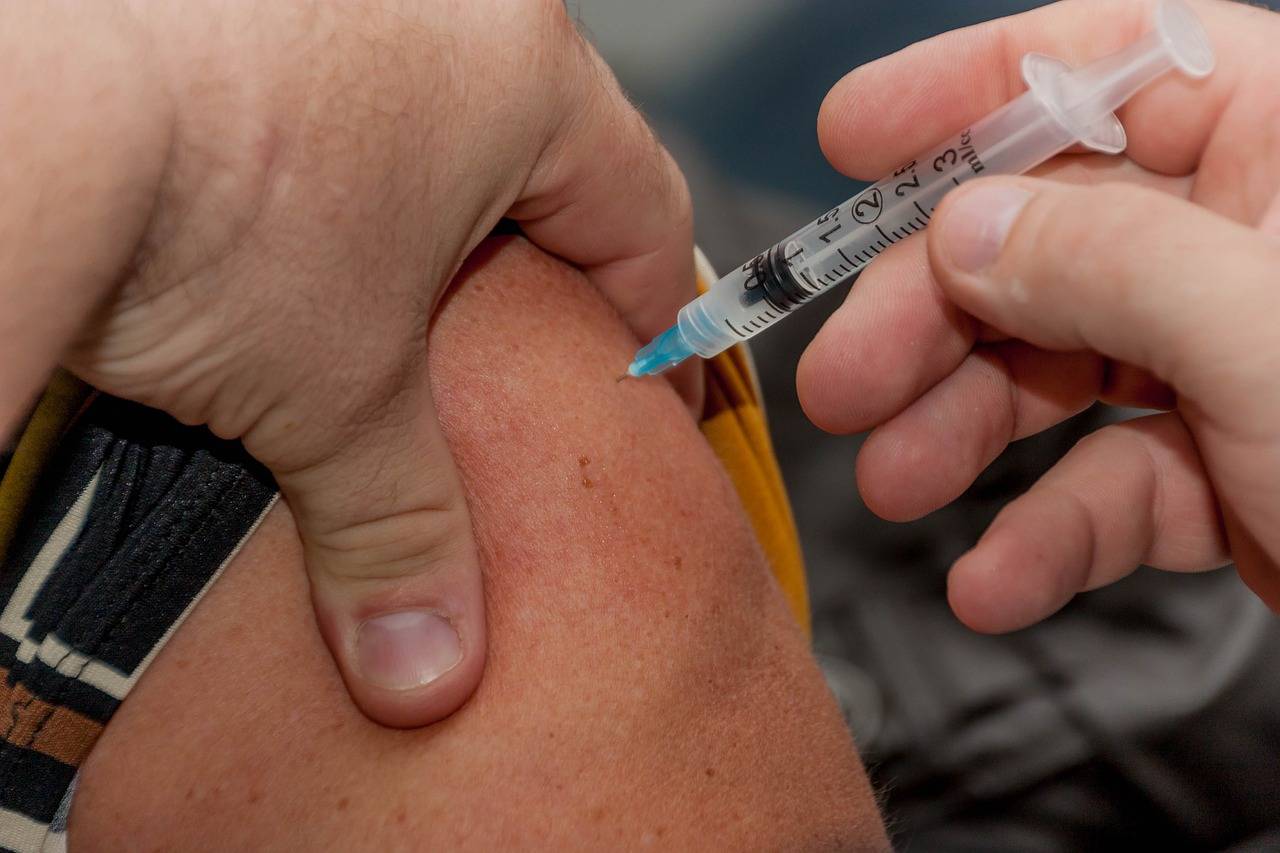Se acaba 2021 y, como no podía ser de otra manera, las noticias relacionadas con el virus, la enfermedad, y las medidas de protección están muy presentes en la lista de los contenidos más leídos en la web de SINC durante este segundo año en pandemia.
Hemos visto cómo se han aprobado diversas vacunas y a lo largo de 12 intensos meses se ha inmunizado a la mayor parte de la población europea, en la campaña de vacunación masiva más grande de la historia.
Comprobada su efectividad, con las vacunas han aparecido dudas —y algunos efectos secundarios— y la información relacionada con ellos ha captado el interés de nuestros lectores.
A pesar de la avalancha informativa que ha generado la covid-19 durante este año, también ha quedado espacio para otras noticias de ciencia, como la descripción de un nuevo carnívoro extinto, una entrevista al divulgador Marcus Chown, o un enigma paleontológico que relaciona a tres uros con una mujer de hace 9.000 años.
1. El tiempo que ha de pasar entre una vacuna y otra
La mayoría de vacunas aprobadas contra la covid-19 requieren de varias dosis. En junio se estableció el lapso de tiempo ideal entre dosis para cada vacuna y ha sido lo más leído de SINC durante este año.
2. La efectividad de la vacuna de Pfizer/BioNtech
La noticia de que la vacuna de la farmacéutica germano-estadounidense era igual de efectiva —un 95 %— en la vida real que en los ensayos provocó una lluvia de clics en nuestra web, hasta situarla entre lo más leído de 2021.
Poco a poco, empezábamos a ganarle terreno a la enfermedad.
3. El virus no desaparecerá de nuestras vidas
“Este virus ha venido para quedarse, vamos a seguir conviviendo con él”, aseguraba en abril la viróloga del CNB-CSIC, Sonia Zúñiga, en otro de los artículos más leídos de 2021.
La comunidad científica está de acuerdo: el SARS-CoV-2 se convertirá en un virus respiratorio endémico —como la gripe estacional— y cuantas más personas estemos vacunadas, menos estragos causará.
4. Datos mal presentados generan confusión
El epidemiólogo Salvador Peiró explica en esta magnífica tribuna la importancia de una adecuada presentación en los medios de los datos de hospitalización, ingresos en UCI, o fallecimientos en personas vacunadas (o no vacunadas).
Nuestros lectores la han colocado entre las más leídas de este año, a pesar de haber sido publicada a principios de diciembre.
5. ¿La vacuna provoca irregularidades en el ciclo menstrual?
En agosto, la Agencia Europea de Medicamentos (EMA) reportó casos de trastornos menstruales tras la vacunación, un hecho que no estaba contemplado en los prospectos de ninguna de las vacunas aprobadas contra la covid-19.
Entre lo más leído de SINC se encuentra esta tribuna donde la ginecóloga del ISCIII Olga Ocón, denunciaba que el problema pasó inadvertido durante los ensayos debido a una falta de perspectiva de género en la metodología científica.

Las vacunas y el virus han copado casi todos los puestos del ranking. / Pixabay
6. Gripe española y covid: diferencias y semejanzas
“El nacimiento y la evolución de la covid-19 se entiende mejor desde el conocimiento de la pandemia de gripe española, de la de Hong Kong, de la rusa y del resto de pandemias víricas del siglo XX”, subrayaba Anton Erkoreta, director del Museo Vasco de Historia de la Medicina en esta interesante entrevista de nuestro compañero Enrique Sacristán, una de las más leídas de 2021.
7. AstraZeneca previene la enfermedad grave
Al ir avanzando el proceso de vacunación, también saltaron a la palestra algunos resultados inesperados, como que la vacuna de Oxford/AstraZeneca mantenía su efectividad hasta 90 días después de la primera dosis.
También se confirmó que el fármaco prevenía por completo la enfermedad grave. Esta noticia de Jesús Méndez, publicada en febrero de este año, también se encuentra entre lo más visitado por los lectores de SINC.
8. ¿Afecta la vacunación a la fertilidad?
Otra de las preocupaciones de este 2021 se vio reflejada en la cantidad de visitas que ha recibido esta tribuna del ginecólogo y obstetra Daniel Mataró.
En julio de este año, Mataró recopilaba toda la información disponible sobre cómo afecta el virus, o la vacunación, a la fertilidad. La conclusión: vacunarse no afecta a la salud reproductiva.
9. Un nuevo carnívoro descrito en Batallones
Casi 30 años después de su descubrimiento, el complejo de yacimientos de Cerro de los Batallones, al sur de Madrid, sigue deparando gratas sorpresas.
En junio se reportaba el hallazgo de una nueva especie de carnívoro que vivió hace 9 millones de años en este lugar, Ammitocyon kainos, perteneciente a la extinta familia de los anficiónidos —popularmente conocidos como `perros-oso’— y sin equivalente actual.
10. Momentos `mágicos´ que cambiaron la historia de la ciencia
Esta entrevista de Enrique al escritor y divulgador británico Marcus Chown se encuentra entre lo más leído de 2021.
En ella se habla del poder de las matemáticas para predecir y describir fenómenos físicos de toda índole: desde la gravedad al bosón de Higgs; pasando por el neutrino, las ondas gravitacionales, o el descubrimiento del planeta Neptuno.
11. Trombos
Tras la llegada de las vacunas a la población general, se reportaron raros cuadros de trombosis posterior a la administración que incluso hicieron que Estados Unidos pausara el uso de la vacuna monodosis Janssen.
Este reportaje de nuestro colaborador Sergio Ferrer se encuentra entre lo más visitado por los lectores de SINC durante este año 2021.
En resumen: tanto la trombosis como la trombocitopenia son fenómenos muy raros, y los beneficios de la vacunación superan ampliamente a los costes.
12. Un enigma paleontológico
La secuenciación del genoma mitocondrial de tres uros —antepasados extintos de las vacas— de hace 9.000 años encontrados junto a los restos de una mujer en la cueva gallega de Chan do Lindeiro (Lugo) abría un enigma paleontológico: ¿Por qué los animales iban con ella, si aún no se había domesticado el ganado?
Esta noticia, que cierra nuestra selección particular, la contaba nuestra compañera Eva Rodríguez.








